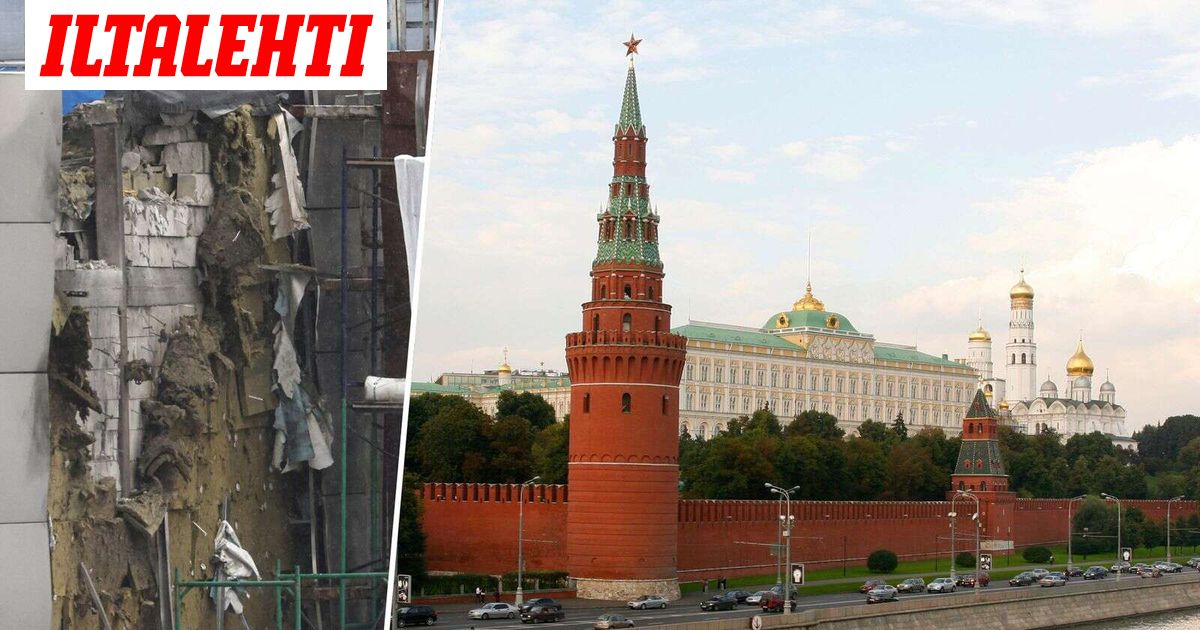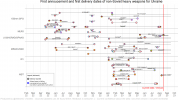-TripleX-
Respected Leader
Näitä tutkia ryssillä ei ole yhtään liikaa ja tässä yksi näyttävästi tuhotaan, heinäkuun toimintaa mutta kertonee miksi nyt on niin hankala vastata huutoon.
Follow along with the video below to see how to install our site as a web app on your home screen.
Note: This feature may not be available in some browsers.
Mariupolin puolustajan tarina

Nine Months of Hell in Mariupol: How This Real-Life Rambo Survived, Resisted, and Escaped Captivity
By John Spencer As I sat in a clean, elegant café in downtown Kyiv it was nearly impossible for me to comprehend the story I was being told. My interviewee was a quiet, humble former active-duty Ukrainian Marine from Mariupol named Gennadiy (or Gena for short). But while Gena was soft spoken, somsofmag.com

Kastehelmi unohtaa myös päivittäisen ryssän isojen ammusvarikoiden yms. tuhoamisen. Miten noissa linjoissa pysytään, jos ammuttavaa ei ole?Yökastelija "Ukraina on jumissa joka suunnalla". Mistään ei tuu mitään ja kohta Venäjä vastahyökkää missä haluaa. Kuinka monta kertaa sanoi noin sen vuoden aikana kun ryssä oli jumissa joka suunnalla? Herätkää pahvit. Meillä on kyy sylissä.
Kuinka pitkälle venäläisjoukot täytyy ajaa, jotta jonkinsortin lossiliikenne Dneprin yli olisi turvallista?
Venäjähän vuosi sitten huolsi joukkojaan Hersonissa kaikenkarvaisilla kelluvilla.
Mietin Ukrainan tavoitetta Dneprin vasemmalla rannalla, se ei voi olla pelkkä joukkoja sitova sillanpää, vaan rintama jossa edetään - pelkkä sillanpään muodostaminen olisi aika kehno strategia, sillä hyökkäämishalun puute näkyisi aika äkkiä. Sillanpäätä täytyy siis pyrkiä laajentamaan rintamaksi.
Kopteriörkki löytynyt turpeikosta. Mankelin Skiigge Böy sanoisi, että ”god öftön”ja ”död”.Heh, eilinen tiputus Robotynessä. Alligaattori mätkähtää kuin jauhosäkki, toiselle muistui mieleen että hellan levy taisi jäädä päälle lähtiessä.



 ) hyvän mielen video perjantain kunniaksi.
) hyvän mielen video perjantain kunniaksi.Jos vielä laittaisi toisen postauksen yleistä ja täysin turhaa lätinää tähän ketjuun: tässä sodassa on suuri(n?) ongelma se että sen jatkuminen ei heilauta enää juuri ketään paitsi ukrainalaisia, zenäläisiä ei lasketa.Kyllä ne menevät yli niin että heilahtaa jo ennen joulua...hyvä jos Kiinassa pysähtyvät
Putin on olosuhteiden pakosta luopunut koko Ukrainan valtaamisesta jo ajat sitten ja siinä mielessä Ukraina on voittanut jo paljon. Miten tämä sota aikanaan päättyy on vielä auki mutta jos Ukraina pääsee Krimille niin se on Putinin loppu. Tuossa ikuisesti perseilevässä naapurimaassa heikko johtaja on entinen johtaja.
Parasta olisi kun Venäläiset hirttäisivät Putinin sähköpylvääseen ja tilalle tulisi joku joka elää vaihtoehtotodellisuuden sijasta ihan oikeassa todellisuudessa ja joka on siirtynyt ja siirtänyt myös päänsä tälle vuosituhannelle. Vaikka ikuinen optimisti olenkin niin tuohon vaihtoehtoon en kykene mitenkään uskomaan. Ei onnistu vaikka kittaisin Vodkaa kolme pulloa päivässä kuten Medvedev nykyään tekee.
Kyllä tämä menee pitkän kaavan kautta ja Ukraina haluaa mennä päätyyn saakka.
 Joo, Fostersin myynti zenäjällä on varmaan laskenut tai loppunut.
Joo, Fostersin myynti zenäjällä on varmaan laskenut tai loppunut.
Se siitä onnistuneesta heittoistuin hypystä.Kopteriörkki löytynyt turpeikosta. Mankelin Skiigge Böy sanoisi, että ”god öftön”ja ”död”.
Itselleni nousi kaksi asiaa:The numbers also point to a lack of rapid medical care on the frontline. Wounded soldiers are increasingly hard to evacuate given how much artillery and gunfire bookend each engagement. Unlike the U.S. wars in Afghanistan and Iraq, where American forces strictly adhered to evacuating casualties within an hour to a well-stocked medical facility, there is no such capability in Ukraine.
Instead, injured troops are often thrown into any vehicle available or leave the front on foot. In some cases, the wounded and dead are left on the battlefield, because medics are unable to reach them. Hospitals and aid stations are often overwhelmed.
Nämä ko. harrastajat tutkivat karttaa juu ja unohtavat muut taistelukenttään vaikuttavat seikat, kuten vihollisen moraalin, huollon haasteet ja esimerkiksi jatkuvan ammusvarastojen ja johtokeskusten eliminoinnin. Kun nyt katsoo YE-koulutuksen saaneiden sotilaiden kausuntoja, niin ne painivat aivan eri sarjassa kun näiden "erikoistoimttaja asiantuntijoiden" Ukraina lyö jatkuvaa painetta ryssän linjaan ja sieltä tulee löytymään se heikko kohta ja homma menee sen jälkeen ryssillä käsille. Myös Venäjän kehityukseen liittyviä seikkoja ei saa unohtaa. Seuraava vallankaappausyritys tai talouden totaalinen sakkaaminen saattaa olla sellainen musta joutsen, joka vaikuttaa myös sodankäyntiin.Nämä asiantuntijoiksi nostetut osint-harrastajat on ehkä hyviä tutkimaan karttaa ja videoita mutta kaikki asiat ei selviä karttaa ja videoita tutkimalla.
Viime vuoden Khersonin valtaus eteni todella hitaasti eli ei juuri lainkaan, kunnes korttitalo yhtäkkiä romahti. Nykytilanteessa on jotain joka herättää samoja tuntemuksia.
Silti, jossain vaiheessa puolustuslinja pitää saada kunnolla puhki ja vihollinen liikkeelle. Ei omatkaan voimat jaksa ikuisesti puskea päälle.

